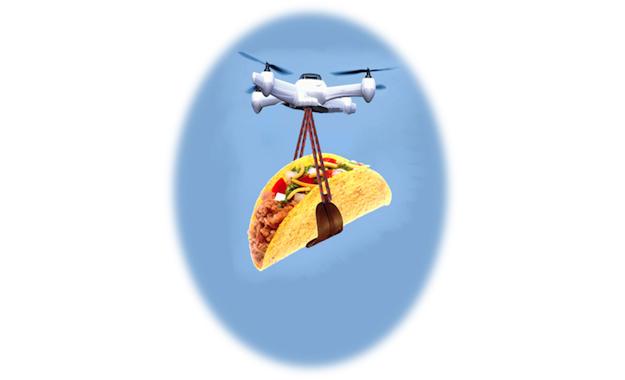Kudos To The DIY Drone Robot Capable Of Creating Wireless Mesh Network. Now, Try It With A Quadcopter
Ever have one of those moments when you want to praise someone for sheer brilliance, and slap them for being an idiot at the same time? http://www.gizmag.com/wifi-robot/23471/ gave me just such a moment.
On the one hand, it’s a brilliant idea. Take a group of engineering undergrads, and let them loose. Result: one nearly indestructible drone robot able to traverse rugged terrain and build a wireless mesh network, using inexpensive parts and easy to obtain materials. It can travel through debris in a disaster area, depositing the individual network nodes, and it’s controlled through an internet application that uses the very same network. It can even remember its location and backtrack to the nearest node if it loses the signal. It was designed with off the shelf software, made with off the shelf supplies, and can be built by any robotics enthusiast with enough experience to build a “robot wars†type drone. It even has a custom designed track system made by a student with no mechanical engineering design experience using CAD software.
All in all, it’s a tribute to the ingenuity of amateurs, a remarkable job of “backyard†engineering which should act as proof of concept for the usefulness and ease with which mesh networks can be build. A couple of hundred of these drones let loose in Africa, dropping off solar powered nodes able to keep themselves charged for years, could build a wireless infrastructure in a matter of weeks for a fraction of the cost of building roads, power lines, cell towers, power plants, routing centers, etc. As I pointed out in “MondoNet Fights the Internet powerâ€:
“I see mesh networks naturally evolving to become the dominant form of network over the next few decades, because it’s the most practical solution to a number of problems that will have to be solved in order to build the VR web as well as to connect the entire world to the internet. Centralized networks are only possible in highly developed countries with existing infrastructures like power and telephone grids, as well as roads. You can’t build a tower where you don’t have either power or access. For vast areas of the world, mesh networks will be the only feasible solution. As handheld devices get cheaper, smaller and use less power, and batteries become able to store weeks or month’s worth of power for them, they will become the world’s primary means to access the internet. As billions of devices begin attaching to the net, they will overwhelm any centralized system. At that point, it will be much simpler to use them in a mesh than it will be to try and build sufficient infrastructure to meet demand. A mesh network can grow as fast as you add a new device to it. And unlike traditional networks, it auto-updates itself as users discontinue using older devices and switch to new ones. It also will eliminate bandwidth issues as thousands of paths will allow data streaming at the limits of the devices own hardware. As we move past the multimedia age and into the VR age, the need for vast amounts of data to be transferred will force the abandonment of centralized systems that simply cannot handle the load for robust multispectrum wireless networks that are more akin to P2P torrents than today’s cellular networks. Technology advancement itself is going to ensure we will move to mesh architectures in the very near future.â€
When you look at an item like this drone and see exactly how easy it could be to build a mesh network compared to a traditional infrastructure heavy system like our current one — and when you can see how delicate that infrastructure actually is in the face of an uncaring nature, it should be obvious that our infrastructure based networks are doomed. The mesh is the future, and it will be built by drones like this, using parts any semi-trained electronics enthusiast can obtain and build.
And yet, it’s still a moment for a facepalm and a shake of the head in despair at the sheer stupidity. Why? Because as genius as the entire thing is… as fantastic as the concept of automating construction units for building mesh networks in any environment is… it’s never going to see production. And not because of any opposition to the building of mesh networks. It’s just that a track-based land unit is pretty limited in comparison to a quadcopter. For all that genius on display, it’s already an obsolete device. That guidance system and custom track tensioner simply are not as agile as a set of rotors, nor can they navigate anywhere near as varied and rugged terrain as a quadcopter can. While I can certainly see such drones being useful in a limited set of conditions, like say, deploying a network under hurricane conditions, as a general purpose drone, which it’s designers appear to intend it as a working model for, it’s a dinosaur.


